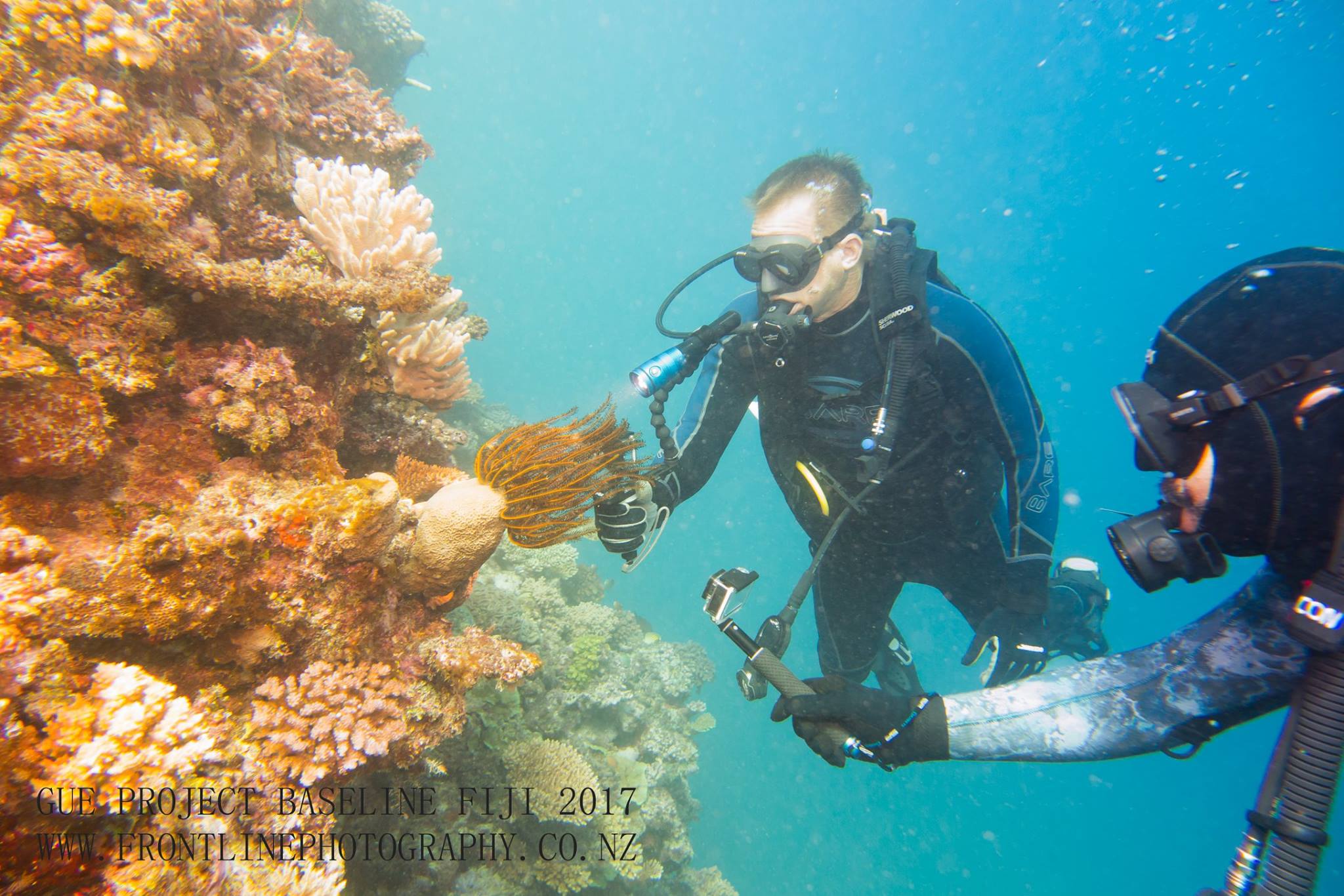Submitted by: Brian Walker, Ph.D.–Research Scientist for Nova South Eastern University
As a coral reef scientist, it is my mission to dive in as many unique places around the world to gain a global perspective on coral reef ecology and their condition. My work primarily focuses in the Western Atlantic and Caribbean, which is a very different system than the Western Pacific. I have dived on the Great Barrier Reef and Ryukyu Islands in the East China Sea but never in the South Pacific. Diving Fiji broadened my experience, knowledge, perspective, and most importantly, my library of amazing underwater photos. As an educator of graduate students, this is invaluable to my students and me. Their work focuses in the Caribbean as well. I can now put their work in a broader global context.

I have read many articles about how degraded the Great Barrier Reef was after the massive bleaching last year. My local work in Florida has also fed into numerous articles about the degraded state of the reefs there. All of this had left me with the impression that coral reefs are doomed. Our trip to Fiji gave me hope again. I saw remote areas with relatively intact ecosystems. The large diverse coral and fish on the Great Astrolabe Reef were astounding and impressive. Seeing large schools of Humphead wrasse, many turtles, sharks, and groupers indicates these areas are not completely fished out. I am hopeful that the connections we made and continued work would provide the information needed to help conserve some of these remaining areas.
My work at Nova Southeastern University centers particularly on the study of coral reef spatial ecology. The data collection design we employed in Fiji will provide the ability to analyze the video data in a number of ways. We can use the imagery to estimate percent cover of live and dead coral and algae. This information can be used to document the condition of the reefs at the different depths and sites we visited. This can be repeated in the future to allow for statistical comparisons. The diversity of corals can also be determined and compared.

It was a great idea to have Ciro Rico, Charles Messing, and I working together so we could design a research project for a graduate student. Our discussions have led to providing at least one University of South Pacific student the opportunity to use the data for a Master’s thesis. Ciro Rico offered to lead this student and Dr. Messing and I will guide the research and writing. It would be best to find some funding for this student, if possible, to ensure the work gets done. This will lead to a peer-reviewed manuscript on the description and condition of the southern Fiji reefs.
Doing the work on the Advantage was great because their professional, capable team took us to remote places not easily accessible and rarely studied. Visiting these same places from a land-based operation would’ve been a nightmare and we would have not been nearly as efficient, meaning less data would have been collected. The use of the submarine opened up an entirely new research aspect. We are not aware of any submersible research done in those areas. Brief discussions with Dr. Messing have indicated we have extended the range of at least one deep coral.
In summary, I consider the Project Baseline Fiji mission a great success. I personally had an amazing experience of a lifetime. I am extremely pleased to have been a part of it and I will happily contribute more of my time to these types of efforts. It was a pleasure working with you and your team and I look forward to doing it again.
Photo Credits: Top Right- Brian Walker, Ph.D. Bottom Left- Rob Wilson, Frontline Photography.
